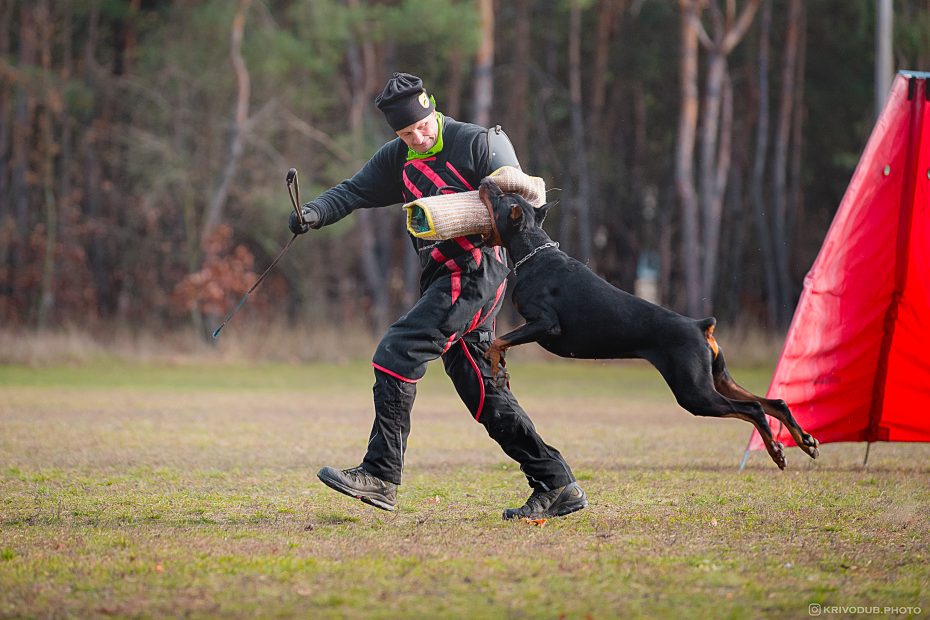Over the course of our lives, we have trained numerous dogs, especially Dobermans, in the BH and IPO programs, and have successfully passed tests with them. Our students have come from various countries, including Russia, Latvia, Finland, Serbia, Slovenia, Slovakia, and even the United States. There was even one from Japan.
With our 20 years of experience, we have developed a set of recommendations for owners who plan to use training services at our kennel.
To help your dog adjust more easily to a new living environment and new living conditions, it’s important to prepare them for it.
Training a dog to stay alone is crucial, especially if it’s a pet dog used to living indoors, perhaps even on the couch. This is particularly important if the dog has never been left alone at home before, as there have always been people, grandparents, children, or other dogs around.
Moving to a new place for temporary residence is always stressful for an adult dog, and that’s perfectly normal. It’s also important to remember that for humans, moving to a completely new place can also be stressful. However, we do it consciously, knowing where we’re going and understanding that it’s either temporary or by choice. For dogs, it’s a different story. They don’t know that they’re just visiting. They may think it’s permanent and need time to adjust to their new living conditions.
Regardless of how accommodating the trainer may be, the dog is still unfamiliar with the situation. It may be wary of new places and people. Even the most sociable dogs, which may not display obvious signs of discomfort, can still feel nervous in unfamiliar environments.
Every dog responds differently to new situations. Some may refuse to eat, others may howl, and some might start off quietly, trying not to draw attention, and then begin to destruct their surroundings. Whenever a new dog arrives, we give them several days to acclimate, and only after that, we start engaging in active play with food and toys. Actual training begins only after some time to ensure the dog feels more comfortable and settled.
So, what I’m getting at is this: To make it easier for your dog to adapt to all the new changes, you should train it to stay alone and to sit quietly in a crate or pen. After all, the trainer is a human too. They want to sleep at night, and their neighbors aren’t thrilled about your dog’s howling..
Next, it’s advisable to train your dog to interact with humans. Every owner can engage in simple exercises with their dog using food and play with toys. Dogs that haven’t been socialized with humans from a young age often find the training process challenging. Typically, these are dogs from large kennels where they don’t prioritize the development of young dogs, hoping that a trainer will come and solve all the issues on their own.
Here’s the thing – a trainer is not a magician. Without prior work with your dog at home, their magic won’t work.
So, what you need to know before boarding your dog at a kennel::
- The dog must be vaccinated and, preferably, in good health, including vaccination against kennel cough.
- All medical treatments for the dog are the owner’s responsibility.
- The dog should be treated for parasites, including fleas, worms, and ticks, with an effective treatment during the entire training period.
- The dog should be accustomed to being in a crate (kennel). If not, they will need time to adapt to the new living conditions. Ideally, the dog should already be familiar with a crate.
- You should provide the dog’s food, bedding, and, if needed, an appropriately sized crate, along with any preferred toys. Additionally, if the dog has difficulty eating regular food during training, you may want to supply treats that the dog particularly enjoys, such as chicken gizzards, hearts, fillets, stomach, liver, or whatever your dog prefers.
